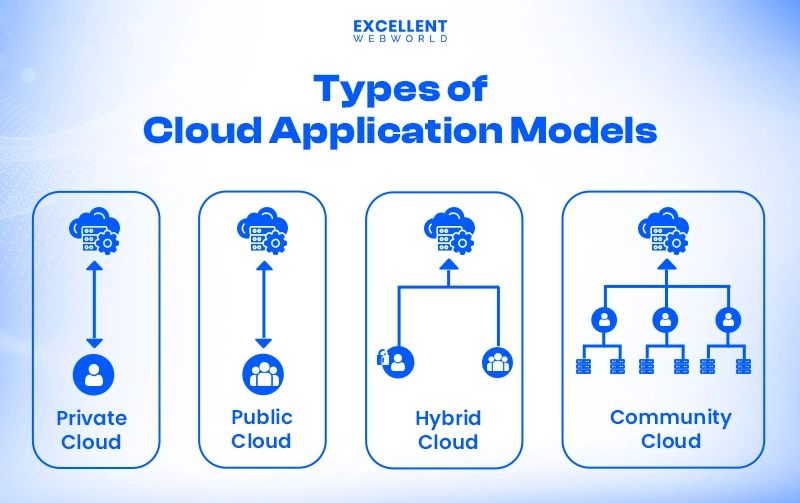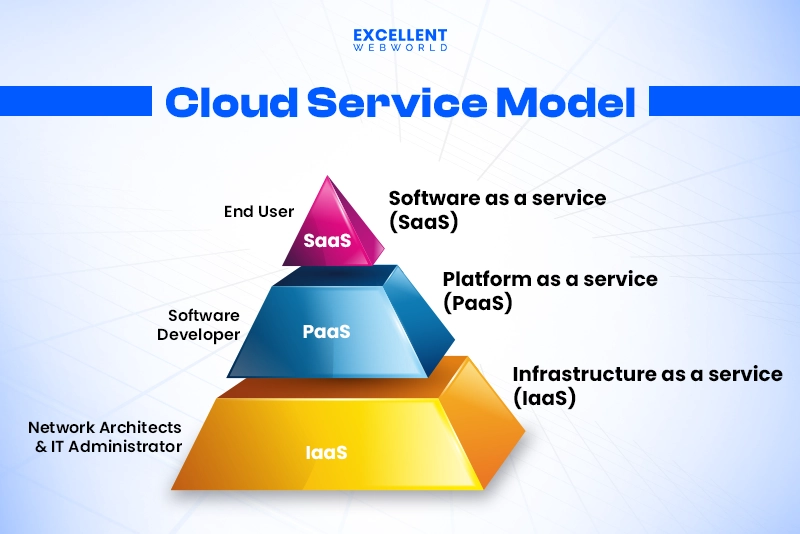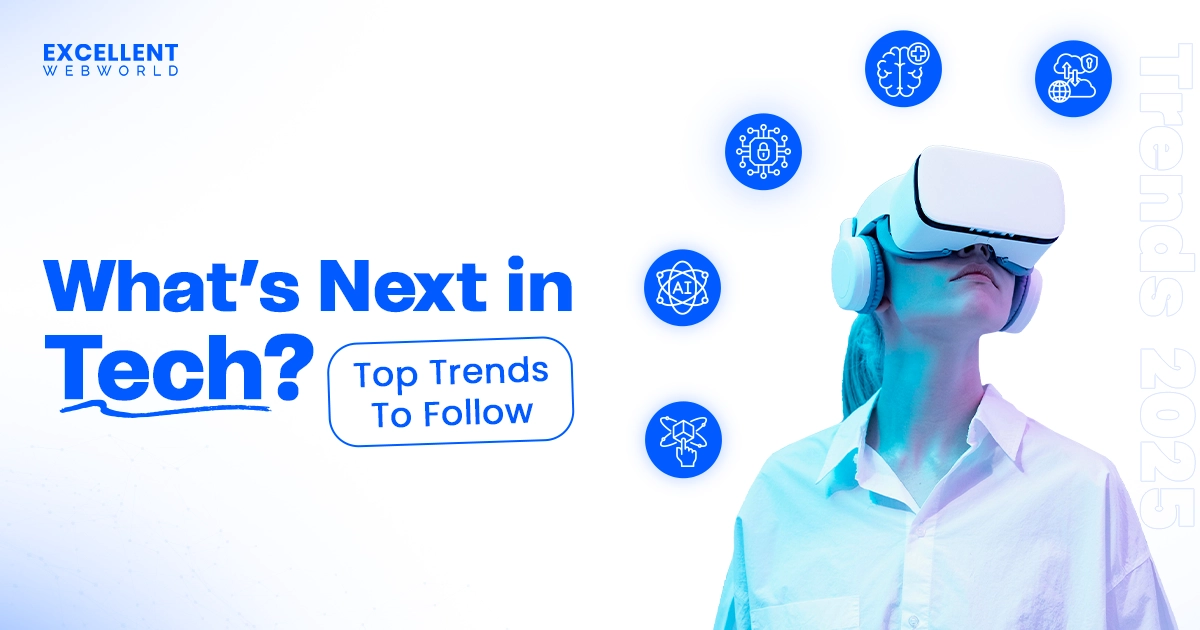Today, cloud-based applications have become essential for driving innovation and enhancing organizational efficiency. They offer ample advantages, including automatic updates and the absence of user maintenance. Not only big firms but also small and medium enterprises are adopting the cloud for their business as it offers unmatched flexibility, better user experience, security, and cost savings.
Actively switching to the cloud is giving the market a fantastic boost. According to the report on the Global Cloud Applications Market, the market size of the cloud was USD 589.34 billion in 2023. The Market Forecast in 2032 will be USD 3189.98 billion with a Growth Rate of CAGR of 20.64%. This means that about 70% of organizations will be on the cloud in the next 8-10 years.
We are certain that you don’t want to fall behind in your efforts to improve operations and accelerate growth with cloud applications. This guide will introduce you to how Cloud-based application development transforms your company and encourage growth in the ever-changing industry.

What is Cloud-Based Application Development?
Cloud application development is the process of creating cloud-based apps. However, it involves several critical stages, including planning, design, development, testing, deployment, etc. Each of these steps requires careful attention and expertise to ensure the app’s success.
Cloud-based applications have various characteristics that help many businesses save money. For example, these applications reduce operational costs by eliminating the need for extensive hardware investments. Following an application migration to cloud checklist can ensure a seamless transaction by addressing key factors like scalability, enhanced security, and cost-effectiveness.
The flexibility of cloud application development is a crucial focus for modern enterprises looking to stay competitive in the evolving technology landscape and a well-planned migration strategy can maximize the performance.
Before exploring cloud application development further, we need to understand how it differs from a Web App. Individuals often tend to interchange both, but they’re two different things, and understanding it plays a crucial role.
Difference Between Cloud Apps and Web Apps
Users often confuse cloud apps with web apps. Web-based applications are created for the web browser, and they completely depend on the internet, whereas cloud-based apps are completely different from them. To better understand both cloud and web apps, review this table.
| Variables | Cloud-based Applications | Web-based Applications |
|---|---|---|
| Accessibility | Operates with minimum or no Internet. | The Internet is crucial. |
| Storage | Multiple replicated centres for data. | Single Data Centre for data storing. |
| Availability | Unlimited | Limited |
| Versions | The provided app is standardized for everyone. | The unique instance of the app is offered to others. |
| Operations | User’s system Or provider web server. | Only provider web servers. |
Cloud web-based applications: Gmail, Dropbox, Zoom, Salesforce
Desktop applications: Adobe Photoshop, Microsoft Word, Excel
Mobile applications: Snapchat, TikTok, WhatsApp, Instagram
Advantages of Cloud Application Development
The benefits of cloud-based app development are clear, and the potential is limitless! It has been a game-changer for the organization by offering a wealth of benefits. Here are the reasons why adopting cloud application development is a smart move for you:
Use Cloud Anywhere:
Users are allowed to access the cloud applications from any device with an internet connection. It enables you with flexibility and convenience. Stay connected anytime, anywhere.
No Need For Manual Updating:
To keep applications updated, users have to hassle but with cloud solutions, everything is easy. All the updates are automatic so users don’t have to worry about checking for new updates. Cloud users can always have access to the latest features and improvements in the applications.
Enhanced Collaboration:
Cloud applications are the best way to seamlessly collaborate with your teams regardless of location. Users can share or access real-time resources, collaborate, and boost productivity. With the cloud, remote work is more effective than ever.
Better Approach For Security:
Cloud services always prioritize users’ data security as they understand how valuable their data is. Hence, the cloud regularly receives security updates to protect data, and robust monitoring is available. Their data are often more secure in the cloud system. Further, Google Cloud Consulting Services can help you meet compliance and security goals addressing the cybersecurity lifecycle.
Budget-Friendly:
With cloud-based app development, you can say goodbye to costly investments in hardware and infrastructure. The cloud application only charges for necessary space and development models. You can save money with cloud applications while maximizing your productivity.
Types of Cloud Deployment Models
Every organization has unique needs regarding cloud applications. Various cloud deployment models exist to fulfill everyone’s requirements.
The main deployment models are Private Cloud, Public Cloud, Hybrid Cloud, and Community Cloud.
Public Cloud:
Public clouds are handled in the house, and third parties provide resources. The cost of this cloud is cheaper than others and some public clouds are available for free. However, users only pay for the resources they use. Public clouds are user-friendly and provide flexibility with data processing. Moreover, they are different from private clouds. Users can access emerging technologies like artificial intelligence.
Private Cloud:
A private cloud is for organizations that want to fully control their data. It is dedicated to a single organization. Large organizations usually opt for a private cloud because they need trustworthy resources. The cloud is handled either by a private server or a third-party provider. However, an IT professional is required to set it up. A private cloud ensures a highly available environment for applications that are essential to the mission.
Hybrid Cloud:
A hybrid cloud is entirely different from both a public cloud and a private cloud. In a hybrid cloud, users can easily move their stored data or applications between the private and public clouds. It is user-friendly and provides the best performance. The best part about a hybrid cloud is that it allows users to keep a replica of local data in the cloud. In a hybrid cloud, users are allowed to use cloud services where they work best while keeping other functions on-premises.
Community Cloud:
A community cloud is for more than one organization where data is shared between multiple organizations. This cloud can be managed, owned, or operated by organizations or a third party. However, the community cloud can be hosted on or off-premises. From this, users are allowed to share data and files and collaborate in real-time.
Main Services of Cloud Applications
All the deployment models have three main services: Infrastructure as a service (IaaS), Platform as a service (PaaS), and Software as a service (SaaS). Let’s learn more about IaaS, PaaS, & SaaS:
IaaS:
Infrastructure as a service is one of the cloud service models. It is managed by both private and public clouds. Users can easily access real-time data. Iaas is a pay-as-you-go service that allows companies to rent resources, including storage capacity, networking, etc. Users can avail of benefits like:
PaaS:
Platform as a service (PaaS) is also a part of the cloud computing service model. There are several Advantages and Disadvantages of Cloud Computing services like PaaS including scalability, cost efficiency, and limited customization. With PaaS, users don’t need to rely on service providers as they can rent the resources they require. For developers, PaaS is the best option as they can build applications faster and more securely. PaaS has a list of benefits which include:
SaaS:
Software as a service (SaaS) is a part of the cloud service model. Users can use various applications over the internet. However, with SaaS, users can pay only for the software they are using instead of buying the software, built and maintained through expert SaaS development services. Just like others, SaaS also has plenty of advantages:
Working Process Of Cloud Applications
The working process of cloud applications includes plenty of steps. Unlike other applications, cloud applications don’t run on local computers instead, they use cloud servers. Let’s understand in brief how cloud applications function:
Cloud Access:
Users can access cloud applications via web browsers and mobile devices. Every cloud-based application is presented on the cloud, which means there’s no need to install it.
Log in System:
Only authorized users can log in to their cloud accounts. Every cloud-based application has built-in authentication systems to secure users’ data and privacy.
Processing:
The entire processing burden is handled in the cloud. Cloud storage helps the applications available on the device run more smoothly and enhances user experiences.
Architecture:
Cloud-based applications are divided into two parts: the front end and the back end. The front end runs on your device, and the back end runs on remote servers.
Data Storage:
Cloud-based applications provide ample storage to users. When you use a cloud app, your data is stored in its database, which you can access both online and offline.
Connectivity:
All the cloud applications are created to provide real-time data interaction between users. For example, a person can do document sharing, conduct online meetings, and get remotely connected with others.
Cloud Maintenance & Updates:
Cloud users don’t need to update their cloud applications as everything is automated. Cloud apps regularly work on updates and bug fixing on cloud servers. Users always access the latest version of cloud applications.
Key Steps To Develop Cloud-based Application
Developing cloud applications can be a tough task, but if you follow the right path then the results will be great. Understand that cloud application development is entirely different from other application development services.
So for a better approach, follow these steps:
Pick Your Niche:
You can start by choosing your niche and identifying your market audience. This will help you understand your target market’s needs. Before working with software development company, you need to understand the requirements to ensure user expectations are met.
Choose Cloud Model:
Before engaging with the developing team, you need to select the right cloud model for your software. You can choose from IaaS, PaaS, or SaaS to determine which model suits your application requirements. This is an important decision that can affect your application’s performance.
Hire A Cloud Developer:
To develop your app safely, you can either hire dedicated developers or select a cloud application development company. Research and evaluate different cloud service providers then choose according to your requirements. Consider factors like performance, security, and support.
Select The Features:
You need to consider a few important features for your cloud application, such as security features, real-time collaboration tools, notifications, and alerts. All these features will help you improve your application performance.
Develop the App and Test Run:
It’s the cloud app developers’ turn to work hard on building an appealing and user-friendly interface. Make sure developers choose the right programming language for your application so it can meet your task needs. Before launching your application, make sure to do a test run to avoid problems.
Launch Your Application:
It’s the final stage, when you can finally launch your cloud application. After launching your app, make sure you monitor its performance and user experience regularly. Fix bugs regularly for seamless performance and add features based on user feedback.
5 Most Concerning Cloud Application Development Challenges
Undoubtedly, developing a cloud application is not as easy as it seems. Technically, app development faces numerous challenges, from coding to launching. Every part of cloud application development is demanding, but there are some common elements that developers frequently encounter:
Security:
Data security is crucial for any application; however, developers often face challenges within the security system. Users’ data is invaluable, and to protect this sensitive data, developers implement extensive security measures in cloud applications. To improve security measures, developers include data encryption, secure access protocols, and regular security audits.
Application Performance:
Regular observation and bug fixing are important for seamless application performance. A glitch in cloud applications can impact user performance and satisfaction. Hence, the developer needs to consider several factors to keep the performance smooth. These factors include the backend process, smooth page loading, and more. All these factors will help maintain a seamless user experience in the application.
Cloud Cost Management:
Cloud application development can cost a fortune if not managed properly. To avoid unexpected costs, developers need to create a comprehensive cost management strategy that makes it easy to track cloud resources. This strategy should include the right pricing models, know the billing cycle, and always monitor resource consumption to avoid overspending.
Internet Connectivity:
Cloud applications require a strong and reliable internet connection to connect successfully. However, users can face complications due to variability in network performance. To prevent users from such issues, developers create an application that brilliantly handles internet connectivity issues. They can use features like offline mode or data caching to ensure seamless performance when the device is disconnected.
Scalability:
One of the most important parts of cloud application is how well a system can grow and adapt to changes in workload. But it is difficult to maintain; hence a developer must create applications with the best scalability. For that, a developer must have a deep understanding of microservice design.
Tools and Technologies for Cloud Application Development
For a seamless experience with cloud applications, there are plenty of factors, tools, and technologies to be considered. Let’s know some of the main tools and technologies for cloud application development:
Cloud Platforms:
Cloud platforms provide access to services to the customers. There are plenty of platforms where users can easily access cloud services, like Amazon web services and Google Cloud Platform.
Containerization and Orchestration:
Containerization and orchestration are the key technologies for cloud application development. Where containerization works for wrapping applications and their reliance on a container. On the other hand, organizations manage these containers. There are a few Containerization and Orchestration listed below:
Cloud Databases and Storage:
Cloud databases are the place of record in the cloud. Meanwhile, users can access cloud storage both online and offline on the network.
Cloud Security Tools:
To protect software and user data cloud security tools are available. For example, such tools can detect threats, protect workloads, monitor performance, etc. Some of the tool examples are:
Most Useful Practices For Cloud-based Applications Development
Understanding the fundamentals of cloud-based application development is important for a seamless experience. Here are five best practices for cloud app developers to successfully run your software:
Observation And Optimization:
While developing a cloud-based application it is important to monitor the performance of the software. It will help in finding the bugs and performance issues within the application. Gathering data from different sources can be difficult, so you have the option to monitor it carefully.
Microservices:
Breaking down complex applications into smaller ones will help with performance, scalability, and agility in the cloud environment. A microservice for a single application will allow your team to work on it independently without affecting the rest of the application.
Automated Deployment:
Automated deployment is important for cloud application development, it reduces the time to deploy new features and updates with less effort and minimizes human error. Also, it can improve team productivity, which can help in better responsiveness to customer needs.
Network Optimization Strategies
To ensure a smooth transition of data and reliable user performance, network optimization strategies are used in cloud app development. Additionally, using network optimization can reduce IT costs and improve real-time performance.
Containerization
Containerization helps in making software easily portable to any platform and cloud environment. It is a software deployment process that wraps an application’s code and dependencies into a single container. It helps in improving portability, security, and resource utilization.
Want To Create Your Cloud-Based Application? Reach Excellent Webworld!
Creating cloud-based applications can be daunting as it requires polished skills from developers. To create seamless performance cloud applications you need to focus on every aspect of your application. The cloud application should be robust, secure, scalable, and, most importantly, tailored to your target audience’s unique requirements.
We are a cloud application development company with 12+ years of experience. Our expert developers will help you create cloud-based applications that will match your every requirement. Let’s connect to build a perfect cloud app for your business!
FAQs
Cloud applications are accessible for any device, whether it is mobile or PC. In contrast, web-based applications are available only on web browsers.
Cloud computing has several advantages that make it the future of modern technology. Its ample storage capacity and smooth performance influence the user.
Cloud application development techniques include:

Article By
Mayur Panchal is the CTO of Excellent Webworld. With his skills and expertise, He stays updated with industry trends and utilizes his technical expertise to address problems faced by entrepreneurs and startup owners.






